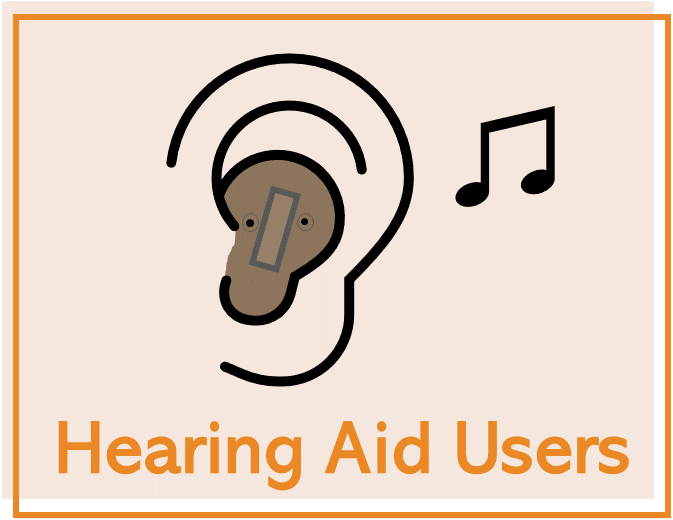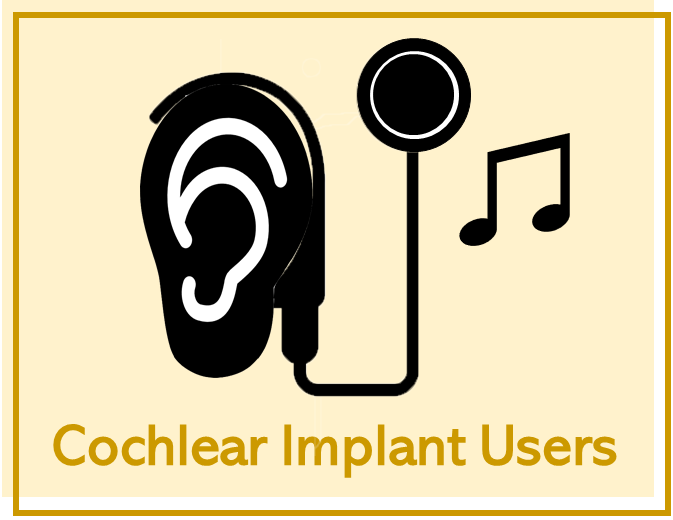See also: Articles on Music, Hearing Loss, and Hearing Devices
As you read this website, keep in mind the following:
-
People with hearing loss can differ in many ways.
-
Some information may be more similar to your situation.
-
Pick and choose the information most useful for you.
Optimizing Music Experiences Through Self-Advocacy:
Information for Hearing Device Users and Families
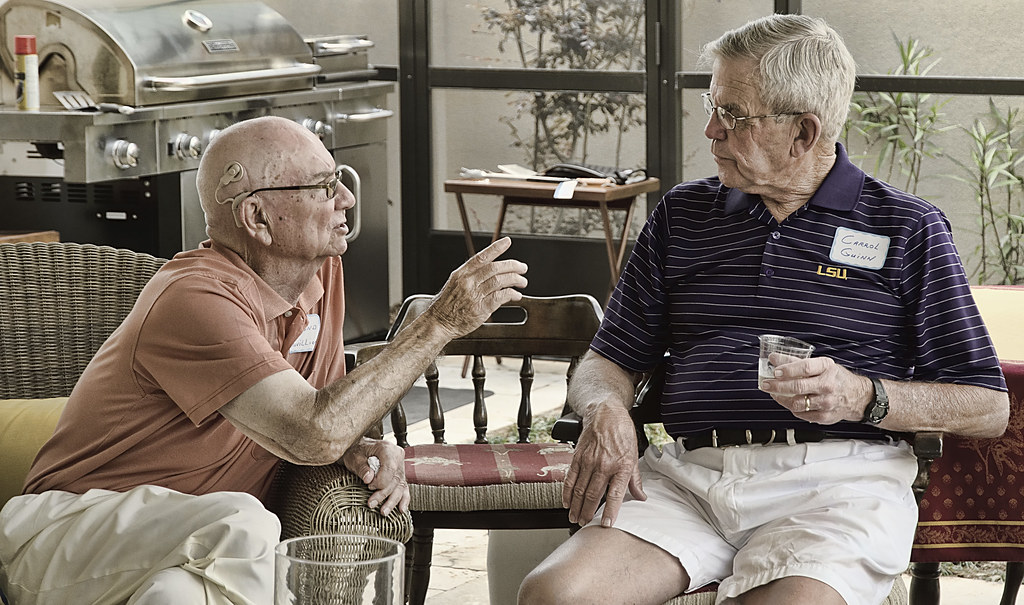
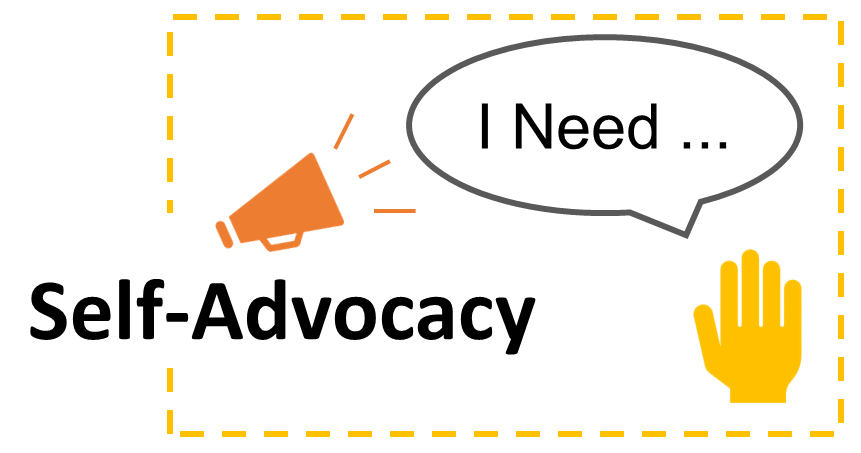
1, 2
If you are a person with hearing loss, you may not want to bring their hearing problems to the attention of others. However, because hearing loss is an invisible disability, other people may not realize that you cannot hear them unless you tell them. In addition, there are common misconceptions about hearing loss and hearing aids or cochlear implants. Hearing devices do not 'cure' hearing loss.
Don’t be afraid to let people know you have hearing issues and ask for the specific accommodations that you want. Sometimes this can be as simple as asking someone to speak more slowly or to turn down the volume of music or television in the background. Other times it may mean requesting accommodations like open captioning or CART. Through self-advocacy, you can also help others understand the challenges of hearing loss and share tips to optimize communications and music experiences.
I feel it is up to the CI user to step up and ask what the conversation is about and make them [conversation partners] aware of my presence.
I’ve trained my friends to sit on my good ear side so I can hear them talk and also hear music.
What is self-advocacy?
Self-advocacy is the ability to articulate your needs and make informed decisions about the support necessary to meet those needs. Self-advocacy is about taking responsibility and having control over the decisions that affect your life. It is an important skill that people with hearing loss and hearing devices can use in many life circumstances. Self-advocacy skills include knowing your rights, having self-awareness, being assertive, and negotiating and speaking up for yourself or a cause.
I have hearing loss and am having trouble understanding you because of our masks. Would you please speak a bit louder and slower so I can hear you better?
Why is self-advocacy important in experiences with music?
Music tends to be poorly conveyed through cochlear implants and hearing aids. Self-advocacy starts with understanding your own hearing loss and how it impacts your experiences, including those with music:
-
Venues that present music may not be ideal for people who use hearing devices.
-
Hearing devices (cochlear implants, hearing aids) are not ideal for conveying music. (Click here to learn more about cochlear implant technology and music. Click here to learn more about hearing aid technology and music.)
-
Situations that involve music combined with speech make both music and speech harder to understand.
-
You may need accommodations in order to understand and enjoy what you hear.
Self-advocacy skills also help to empower you to seek accommodations and strategies that can enhance your enjoyment of music.
What are the characteristics of self-advocates?
-
Self-awareness: People who acknowledge their hearing problem and its effects on daily life are more likely to seek solutions.
-
Self-motivation: People who are self-motivated to make the most of their residual hearing and technology tend to have better-listening experiences.
-
Positive attitude: People with a positive attitude tend to get greater benefit from their hearing devices.
-
Good problem-solving skills: People who are practical, routine-oriented, open-minded, and believe that they can control their behaviors and environment are more likely to adjust well to hearing loss and hearing devices.
-
More experience with hearing devices: People who actively use their hearing aids and/or cochlear implants for longer periods of time (both daily and yearly) tend to show higher levels of satisfaction with their device.
What are steps toward self-advocacy?
-
Educate yourself: Learn how to self-advocate in difficult listening situations.
-
Understand your environment and learn approaches that can improve listening, such as good seating or quieter locations.
-
For example, sitting too close to sound speakers can make the sound intolerably loud, or drown out the voice of your conversation partners.
-
In contrast, being seated too far from a performer can make perception of music problematic.
-
-
Know and understand how assistive listening devices (ALDs), strategies, and resources can help you when you are in public places.
-
Click here to learn more about ALDs for hearing aid and cochlear implant users.
-
Click here to learn more about tips to enhance communication for CI recipients, while reducing or coping with noisy background music.
-
-
-
Educate others: Educate others about hearing loss and ways to improve communication.
-
Talk about your hearing loss with others. Many people don’t understand how hearing loss affects communication unless you tell them. They may think that hearing devices make hearing 'normal.' It can be frustrating to have to repeat explanations to them many times because they might forget, but don't give up! Communication is key to relationships.
-
Share information from this and other websites about hearing loss, communication, and music. http://www.cisupportcenter.com/communications-strategies/
-
-
Know your rights: Public locations are required by the Americans with Disabilities Act (ADA) to provide reasonable accommodations for those with a hearing loss. https://www.hearingloss.org/programs-events/advocacy/know-your-rights/ada/
-
A successful self-advocate is informed. Take the time to learn your rights. You can also click here to learn more about your rights.
-
Be familiar with your rights under disability law so you can explain the law, get help when necessary, and get the services you need.
-
-
Practice self-advocacy: Self-advocacy can be difficult at first. Like anything else (playing a sport, using a computer, etc.), practice makes perfect.
-
Self-advocacy can improve with practice. Practice making requests at home with friends or family.
-
While self-advocacy may not always work, it can often help.
-
Make your request for reasonable accommodations as early as possible. It often takes time to find accommodations that best suit your needs.
-
Be a regular patron of public places (such as restaurants) that respond positively to your requests. And let them know why you keep coming back!
-
-
Find an organization near you to learn more about advocating for people with hearing loss.
-
To learn more about support services for adults with hearing loss, click here.
-
To learn more about hearing loss organizations and associations for individuals with hearing loss, click here.
-
It was always interesting in HLAA groups to hear about other deaf/hard of hearing individuals’ experiences in complex listening environments, and what they did or did not do to fix the problem.


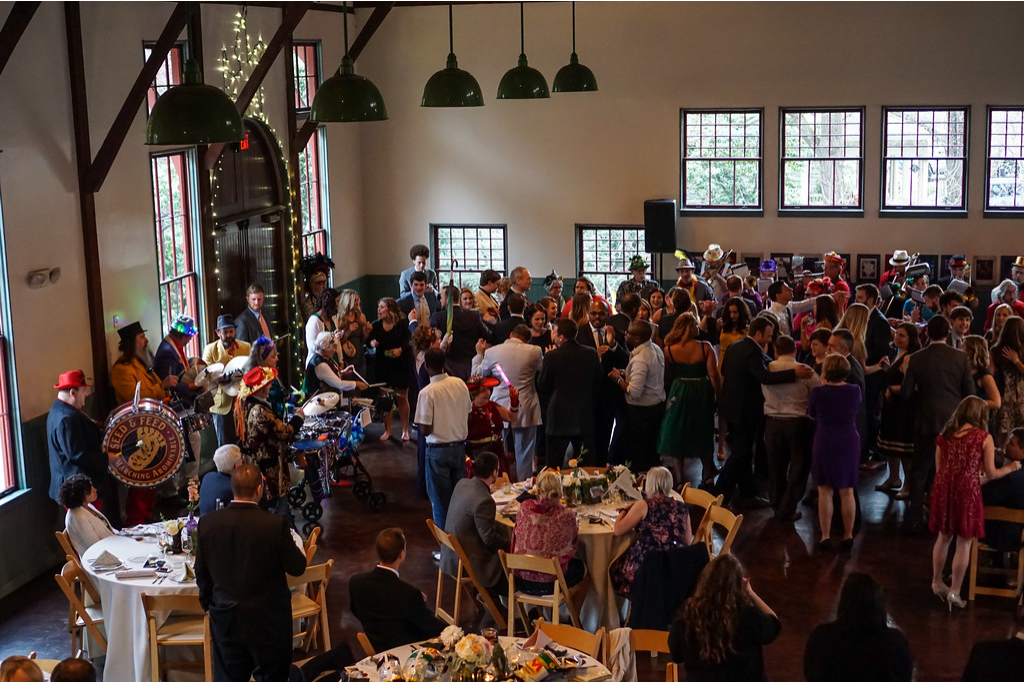

What are some examples of self-advocacy in public places such as restaurants or social events?
Cochlear implant users share some following tips:
-
Dining out:
-
Research quiet restaurants. Find out about the listening conditions in local restaurants.
-
Read restaurant reviews online; you may find loudness ratings.
-
Ask friends for recommendations
-
Consult crowd-sourced review apps to locate quiet restaurants in your area.
-
Act early. Make reservations as early as possible in order to have more options.
-
Provide hearing-related information early.
-
When you make your reservation, mention that you use hearing devices and request a quiet table.
-
When you arrive at the restaurant, remind the host or manager about your hearing loss.
-
If the first table you are given does not meet your needs, ask to be moved.
-
No reservation? Then introduce yourself to the restaurant host or manager and explain that you have a hearing loss.
-
Avoid busy times. If possible, eat early or late. Restaurants tend to be less heavily trafficked during off-peak times; therefore, they will be quieter.
-
Consider restaurants with sound-absorbing decor. Look for restaurant design features like carpet, curtains, cushioned seats, fabric tablecloths, and acoustic tiles.
-
Advocate for your needs.
-
Explain that you have a hearing loss and why you need a quiet location.
-
Ask to be seated away from the kitchen or in more remote places besides a wall in the restaurant.
-
Experiment to see what works best for you.
-
Ask the host or manager at a restaurant if the restaurant overhead music can be turned down near your table.
-
Limit group size. If possible, limit groups to four to six people. If a larger group is required, focus on conversing with those next to you and across from you.
-
Experiment with technology fixes.
-
Ask your audiologist to create a program that is suitable for restaurants or social events that will block out background sounds and focus on voices or try an assistive listening device.
-
Speech-to-text apps can be used discreetly right on your phone.
-
-
Training your conversation partners:
-
Educate your conversation partners about hearing loss.
-
Help them understand your situation.
-
Share communication tips with your loved ones: https://www.ucsfhealth.org/education/communicating-with-people-with-hearing-loss
-
Remind the speaker - repeatedly if necessary - to face you when speaking.
-
Let people know the best way to talk with you.
-
Tell your conversation partner how best to talk with you.
-
For example, tell them to speak clearly, slowly, distinctly, but naturally, without shouting or exaggerating mouth movement.
-
Ask them to rephrase sentences you didn't understand.
-
Ask them to make sure that their face is adequately lit.
-
-
Tell others what you need. In loud social events, ask your conversation partners if you can move to a quieter area, such as a nearby hallway.
-
-
Get rest and take breaks.
-
Get to know yourself and pay attention to your energy level.
-
Give your brain a break when you get too tired! Leave the noisy environment for a few minutes.
-
Show appreciation. Provide positive feedback and thank those who helped you with accommodations. That may encourage them to do so in the future for others.
I've been known to ask the hosts to turn [loud music] down/off, and it usually ends up that other people thought it was too loud as well but didn't want to say anything.
Assistive devices or software settings/programs for cochlear implant (CI) users to improve music listening
Ask your audiologist and other CI users about helpful assistive listening devices. Different CI users find different devices helpful. Therefore, trial and error may be necessary.
CI users have suggested the following resources for improving music listening:
-
Microphones that feed directly into the CI, making speech louder and easier to understand.
-
Audio cables that connect to a phone or music player and feed into the implant. Bluetooth can be used with the same effect.
-
A directional microphone in the implant can help focus on music.
-
Different software settings work differently in different settings and for different CI users. Experiment to find what works for you.
-
Mini microphones are portable, wireless, clip-on devices. Give a mini mic to your conversation partner or speakers to clip onto their collar.
-
Dual/Directional microphones – two microphones on the cochlear implant – help to filter direct sound from background noise and localize the sound source.
-
Induction loops can be used in large public spaces, such as churches and theaters. This uses the built-in telecoil in your CI processor.
-
More information about induction loops can be found in the above links to the NIDCD and NAD websites.
-
Public spaces are required by law to provide reasonable accommodations for individuals with hearing loss.
-
-
The National Institute on Deafness and Other Communication Disorders (NIDCD) provides basic information on many types of assistive devices: https://www.nidcd.nih.gov/health/assistive-devices-people-hearing-voice-speech-or-language-disorders
-
The National Association of the Deaf (NAD) also provides information on assistive devices: https://www.nad.org/resources/technology/assistive-listening/assistive-listening-systems-and-devices/
References:
Gfeller, K. E., Driscoll, V. D., & Schwalje, A. (2019). Adult Cochlear Implant Recipients’ Perspectives on Experiences With Music in Everyday Life: A Multifaceted and Dynamic Phenomenon. Frontiers in Neuroscience, 13, 1229. https://doi.org/10.3389/fnins.2019.01229
Vestergaard Knudsen, L., Öberg, M., Nielsen, C., Naylor, G., & Kramer, S. E. (2010). Factors influencing help seeking, hearing aid uptake, hearing aid use and satisfaction with hearing aids: A review of the literature. Trends in amplification, 14(3), 127-154. doi: 10.1177/1084713810385712
Click here to review references used in preparation of this website.
1. All images on this website are used under Creative Commons or other licenses or have been created by the website developers.
2. Click here to access the sources of images on this page.
